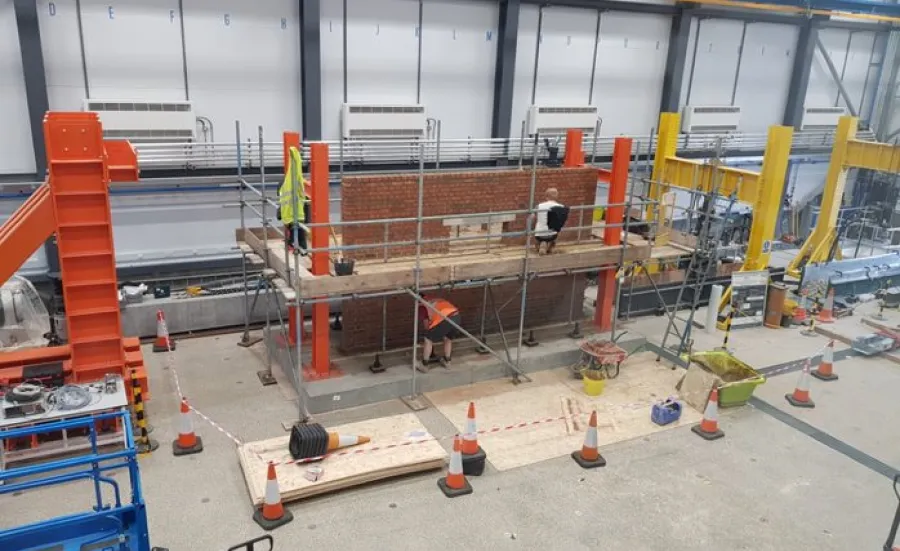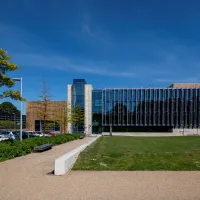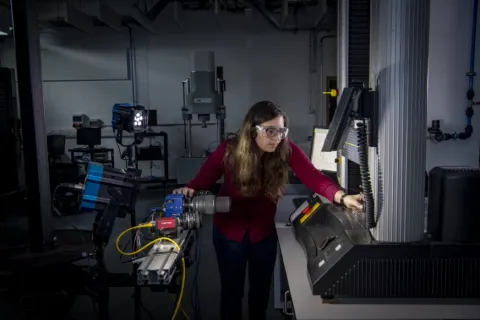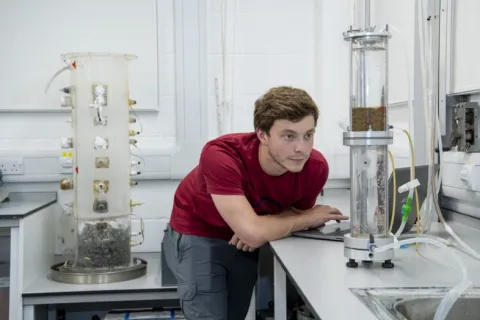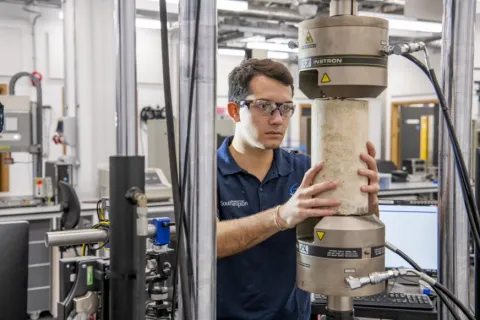About the large structures testing laboratory
Part of the National Infrastructure Laboratory, this is a strongfloor facility for testing structures, components and materials. It can test them at a range of scales across a wide range of application areas.
This laboratory also houses the Structures 2025 facility which provides data-rich structural testing, using multi-axis loading and advanced image analysis techniques to measure system behaviour.
Uses include:
- non-destructive and destructive testing of sub-structure of large components from a wide range of industries
- applying optical metrology techniques to obtain data-rich response from each test
- applying hybrid testing (FE model with actuator control) to maritime stiffener components
- ballast/sleeper interactions for the rail industry
- testing full-scale masonry structures to validate numeric models of earthquake response
- sub-structure/component testing of wind turbine blades for the energy industry
- assessing the influence of corrosion on reinforced concrete structure
Commercial services
We carry out consultancy and enterprise projects for clients outside the University. Contact us to find out how we can work with you.
